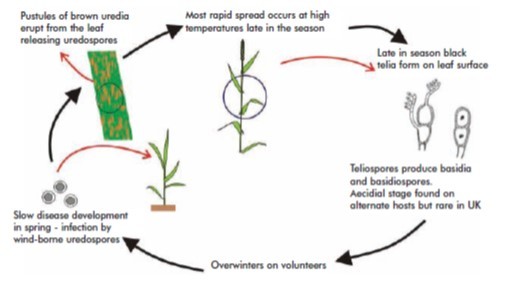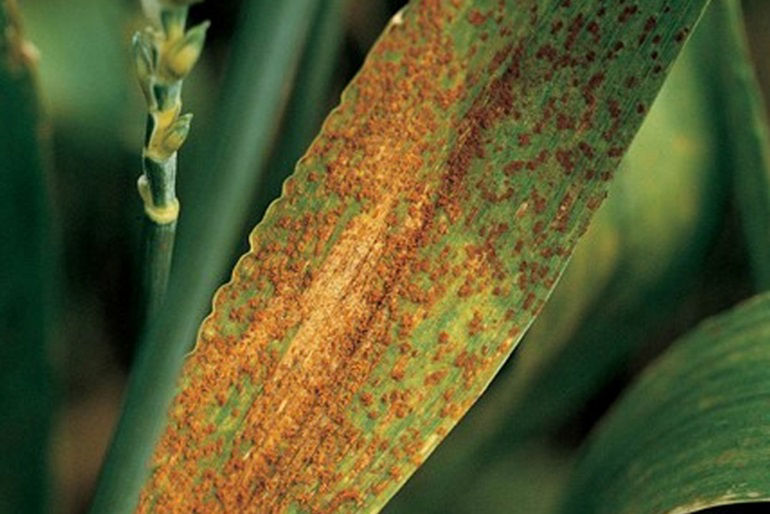Leaf or Brown or orange rust of wheat
Causative agent: Puccinia triticina( P.recondita)
Symptoms:
- pustules are orange-brown in colour, circular to oval in shape and chiefly found scattered on the upper surface of leaves. Colour depends on the freshness of the pustule. Because most spores are produced overnight, pustules are best observed in the morning.
- Uredia are seen as small, circular orange blisters or pustules on the upper surface of leaves.
- Uredospore appear mostly on leaves, rarely on leaf sheath and stalk
- Uredia: always found scattered on leaves, never found in rows or stripes, it brusts out on the upper surface as point (bright orange color), orange colored pustules surrounded by yellow halo.
- Uredosori brust early and release uredospores
- Black pustules form as the plant approaches maturity(Telia)
- Tiny orange lesions may appear on seed heads but no pustule.
Etiology:
The uredospores are brown, spherical and minutely echinulate with 7-10 germ pores.
Favorable condition:
- High RH and tempr 25C
Survive and spread:
- Heterocious life cycle.
- Survive: teliospore as a resting stage, basidiospore present as alternate host: Thalictrum
- Spread: urediospore infect wheat plant and spread by wind.
Disease cycle:
- Polycyclic disease

Management:
- Grow resistant varieties like Sonalika, NP 700 & 800, Lerma Rojo and Safed
- RH-124, an Indofil product is very specific to brown rust (or) spray dithiocarbamates like zineb@0.25% or Mancozeb@0.25%
- Seed dressing with Plantavax@0.1% followed by two sprays with the same chemical
